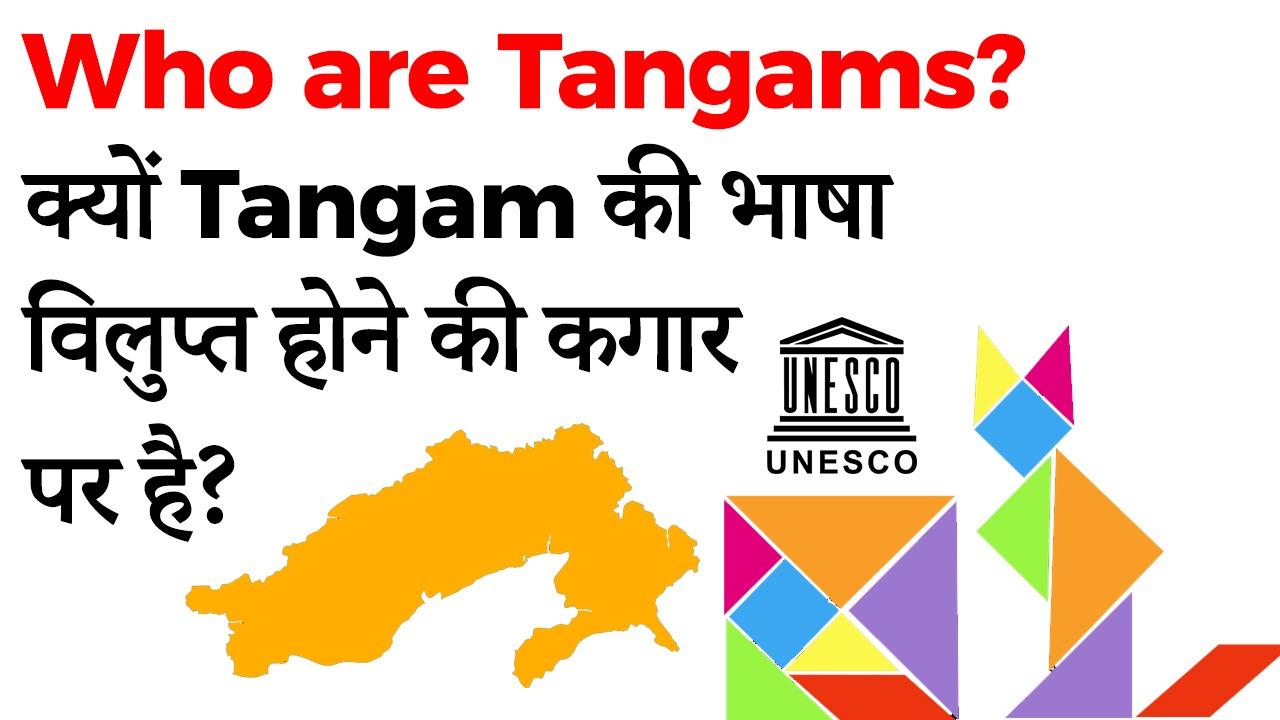Table of Contents

TANGAMS
- Last week Arunachal Pradesh Chief Minister Pema Khandu released a book titled Tangams: An Ethnolinguistic Study Of The Critically Endangered Group of Arunachal Pradesh. “Language loss is the reason for cultural erosion,”
- CM Khandu had said, emphasising how the book will help the future generations of the Tangam community, which has reportedly 253 speakers concentrated in one small hamlet of Arunachal Pradesh.
Who are the Tangams?
- The Tangams are a little-known community within the larger Adi tribe of Arunachal Pradesh and reside in the hamlet of Kugging in Upper Siang district’s Paindem circle.
- For long, the only account of the Tangams could be found in bureaucrat Tarun Kumar Bhattacharjee’s book, Tangams (1975) where the community’s population was pegged at 2,000 spread across 25 villages.
Who are the Tangams?
- From 2016 to 2020, a team from the Centre for Endangered Languages (CFEL) of Rajiv Gandhi University (RGU), carried out extensive field research and documented the community.
- “Our survey revealed that Tangams were now concentrated in only one village (Kugging), with 253 reported speakers,” said Lisa Lomdak, Assistant Coordinator, CFEL and Assistant Professor, Arunachal Institute of Tribal Studies (AITS), RGU.
Why are there only 253 speakers?
- As per the UNESCO World Atlas of Endangered Languages (2009), Tangam — an oral language that belongs to the Tani group, under the greater Tibeto-Burman language family — is marked ‘critically endangered’.
- To communicate with their neighbours over the years, the Tangams have become multilingual, speaking not just Tangam, but other tongues such as Shimong, Khamba and Hindi.
- “They rarely speak their own language now since their population is restricted to a single village. Their neighbours are various Adi subgroups, so they have picked up other Adi languages and their own is slowly disappearing” said Kaling Dabi, Senior Research Fellow CFEL, who is doing a PhD on the Tangam community.
Why are there only 253 speakers?
- Moreover, the Tangams are relatively unknown — even within Arunachal Pradesh. “The village lacks proper infrastructure in all basic sectors of education, health, drinking water facilities, road and electricity. Roads have reached Kugging only in 2018. Not a single person from the community has gone to university,” said Lomdak.
- According to Professor S Simon John, Director AITS & Coordinator, CFEL, RGU, there has been no systematic, scientific or official survey on the number of languages in Arunachal Pradesh till recently. An official linguistic survey by the state government began only in 2018, which is currently underway. Before that, People’s Linguistic Survey of India was published in 2017.
THREE CATEGORIES
- Simon said that despite there being a plethora of languages in the state, almost all are endangered. According to the UNESCO Atlas of the World’s Languages in Danger (2009) more than 26 languages of Arunachal Pradesh have been identified as endangered. The degrees range from ‘unsafe’, ‘definitely endangered’ to ‘critically endangered’.
Why are the languages at risk?
- The diversity of languages has led various communities to depend on English, Assamese and colloquial variety of Hindi called Arunachalee Hindi as the link languages. Many believe this shift has led to loss of native languages of the tribal communities.
Are languages like Tangam more vulnerable to extinction?
- Yes. The Tangam case is especially worrying because their population is so low. “Another critically endangered language is Meyor but they are better off than Tangam because they at least have a population of 1,000 odd people,” said Dabi,
Will the new book help?
- Yes, the 350-paged book, with photographs, becomes relevant for the future generation of Tangam people. “The significance of the present study is the multidisciplinary approach as it takes into account not only language, but also rituals, folklore, food habits, belief systems etc,” said Simon.
Latest Burning Issues | Free PDF























 WhatsApp
WhatsApp